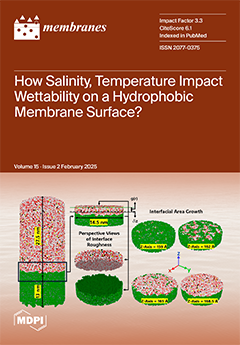Excessive (carbon dioxide) CO
2 emissions are a primary factor contributing to climate change. As one of the crucial technologies for alleviating CO
2 emissions, carbon capture and utilization (CCU) technology has attracted considerable global attention. Technologies for capturing CO
2 in extreme
[...] Read more.
Excessive (carbon dioxide) CO
2 emissions are a primary factor contributing to climate change. As one of the crucial technologies for alleviating CO
2 emissions, carbon capture and utilization (CCU) technology has attracted considerable global attention. Technologies for capturing CO
2 in extreme circumstances are indispensable for regulating CO
2 levels in industrial processes. The unique separation characteristics of the ceramic–carbonate dual-phase (CCDP) membranes are increasingly employed for CO
2 separation at high temperatures due to their outstanding chemical, thermal durability, and mechanical strength. This paper presents an overview of CO
2 capture approaches and materials. It also elaborates on the research progress of three types of CCDP membranes with distinct permeation mechanisms, concentrating on their principles, materials, and structures. Additionally, several typical membrane reactors, such as the dry reforming of methane (DRM) and reverse water–gas shift (RWGS), are discussed to demonstrate how captured CO
2 can function as a soft oxidant, converting feedstocks into valuable products through oxidation pathways designed within a single reactor. Finally, the future challenges and prospects of high-temperature CCDP membrane technologies and their related reactors are proposed.
Full article






